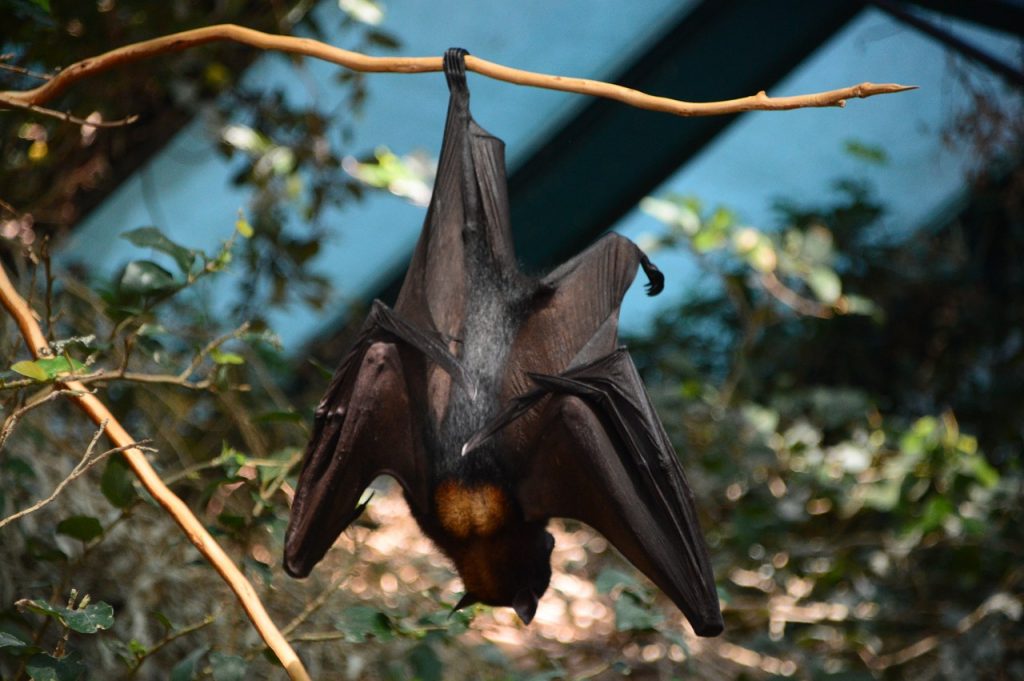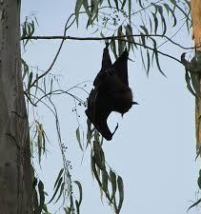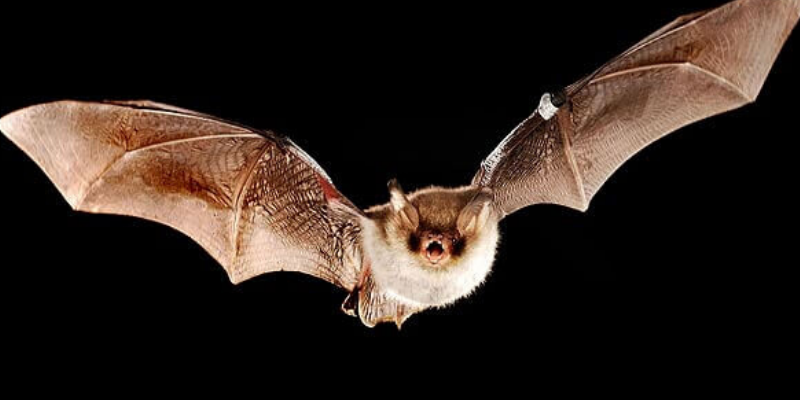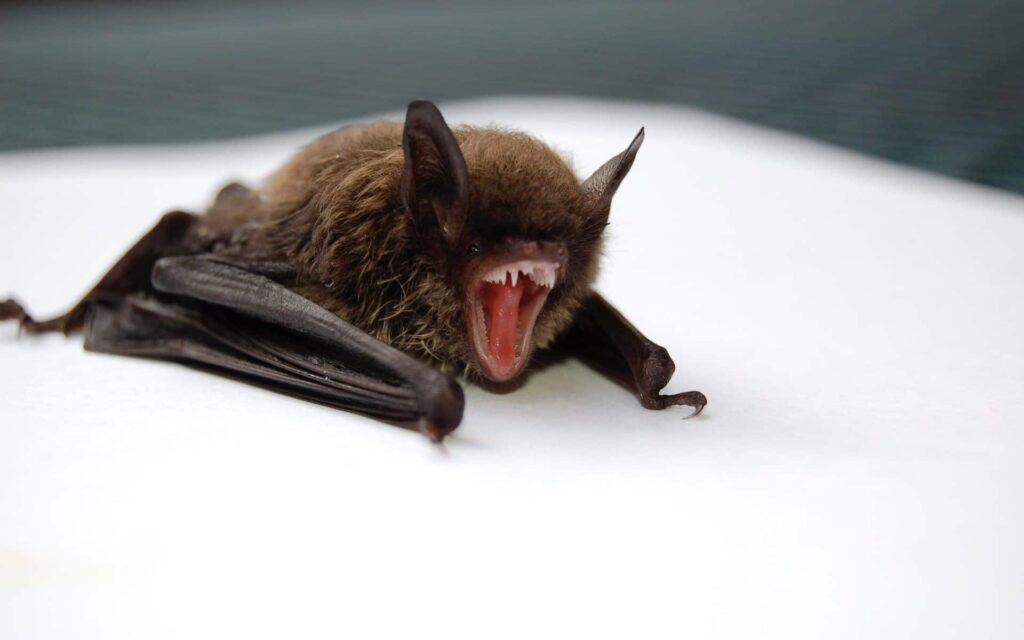How to Get Rid of Bats Naturally
So, you’re dealing with bats. And you need to get rid of bats. Fast. As scary as they may be, this is often due to the negative stereotype they have as portrayed by every horror movie, ever! Bats are actually pretty gentle creatures and are a necessary part of the ecosystem. They’re often endangered in many states and are protected, so killing them is not advised.
Typically, bats will give birth between May and July during the warmer months. In warmer climates, bats can give birth up to twice a year. When a female bat gets ready to give birth, she’ll find a place to hide and roost, which is typically where they become a pest.
Gestation for a bat takes up to 6 months, but for most species, this occurs much earlier. Bat pups are born as singular bats, though bat twins have been sighted. They reach maturity in just two months. Newborn bats can’t really fly nor do they have good control yet, so they’re often left in the roosting area while the mom gets food.
They’ll nurse up to five months in the roost, even though the bat pups can fly around a month after being born. Bats will then start to fly and forage their own food after a few months and return to the same nest afterward. The cycle repeats for next season. They’ve been getting a bad rep lately, but most bats will hide and fly away from danger rather than provoke it. We should respect them rather than exterminate them when possible.
Bat anatomy
Bats have fascinating anatomies nad have been the study for researchers for years now. Because of their lightweight, aerodynamic bodies, they’re able to detect, traverse, and fly around terrain at high speeds super efficiently and utilize echolocation for traveling in the dark.

Tips on How to Get Rid of Bats Fast
Bats play a vital role in the ecosystem as pest controllers and pollinators. But because bats pose a health risk through the potential transmission of zoonotic diseases, it is necessary to keep them away from humans. Learn how to get rid of bats effectively and humanely–sans the garlic.
Fill up holes and seal cracks
In the wild, bats like to hang out in caves during the day. In the absence of these caverns, they will take any dark space that gives them shelter and protection from predators. Given this, it’s easy to see why it is common to have bats in chimneys, bats in attics, bats in wall cracks, and bats in roof eaves.
If you get rid of possible entry points, that’s one less reason for bats to choose your home. This is the best way to prevent a bat infestation. However, if you already have bats in house, make sure none of them are trapped inside before you start filling up the holes.
Professionals typically fill up the hole with a metal mesh that is hard for animals to chew through, yet malleable enough to fit in crevices of different shapes and sizes. Stuf-fit Copper Mesh is a great option for this because it’s stain-proof, rust-proof, and chew-proof. After stuffing in the whole, use a foam sealant that expands to fill in the tiny holes in the mesh. Pur Black Foam is a popular option among pest and wildlife control companies.
Use a natural bat repeller
If you want to know how to deter bats in a simple, easy way, bat repellent sprays are a good option. These are made of synthetic chemical or natural ingredients that are unpleasant to bats. Bat spray can deter bats from nesting and deter bats from roosting when applied in strategic entry points, resting spots, and hollow spaces.

What It Takes to Get Rid of Bats
Bat infestation puts you in danger of more than mere odors. If you have these uninvited guests living on your roof, it is only a matter of time before their urine and droppings start posing serious health concerns. Besides health issues, but droppings and urine can destroy wood and other building materials; thus compromising the structural integrity of your home. If you have some bats living under your roof, you have every reason to act fast. Here is a guide on how to go about bat removal.
Bats are a protected species in most states. Thus, bat removal is often a controlled process that is governed by some law. You are advised against bat extermination of risk serious fines. This implies that you are legally mandated to use only humane ways to evict these unwanted guests. One human approach is to build a bat house and force them to relocate there.
Know the Species
After familiarizing yourself with local laws, you need to understand the type of bat species you are dealing with. This helps come up with a removal strategy that works for that specific species. Understanding the bat species will help you get a good idea of things like their maternity season. You do not have to wait until the mother gives birth.
Identify possible entry points
If you are sure that there are no babies inside, the next thing should be to identify all entry and exit points. This might require you to monitor your home during dusk or dawn closely. This can be quite challenging for an ordinary homeowner considering that bat colonies have multiple entry points and these entry points can be as small as half an inch.
Cover Each Opening and Clear the Mess
After identifying the entry points, the next move should be to cover them preferably with one-way exit valves. These valves allow bats to get out and deter them from regaining access. Once there are no bats inside, the next step should be to clean the droppings and urine in their wake.

How to get rid of Bats – A detailed guide
Nowadays, bats aren’t confined anymore to caves and forests. Instead, these creatures have now adapted to the slow spreading of urbanization amongst rural areas. They are nocturnal creatures, meaning that they only move around when the sun is down. Otherwise, they are to be seen sound asleep while upside down in dark places.
Because of their reluctance to sunlight, they are mostly found inside cold and hidden places. However, this is not only limited to the wilds. They can also convert any dark place that is not frequented by humans into their own homes. This is when they start to become pests.
The difficult part in having bats as pests in your house is the fact that they come across as scary for many due to the large amount of folklore that is negatively associated with them. After all, some thrive on blood for food, a fact which easily scares most people.
Bats
All over the world, there are about 980 species of bats. Out of all of these, about 40 species are found around the United States. They are mammals, which means that they are of the same class which dogs, cats, and humans belong in. They are mostly active during the night. They are not necessarily blind when the sun is out, however, during the night, they have to see using echolocation. Basically, whenever they make noises, they will determine how fast the sound vibrations return to their side which tells them how far something is in front of them.
What do they eat?
What propagates fear with bats is the fact that some of them feed on blood. There are only 3 species which does this, though. Most of them eat small insects, fruits, or fish. This is why they mostly frequent around forest areas. If one happens to be near your property, it means that there is a steady source of pests around your area

Step by Step Guide to Bat Removal
Though there are many different types of bat species noted in the United States, it is normally the bat types that live in colonies which are problems to homeowners. Though bats aren’t aggressive, they are considered a challenge when large colonies of them begin to live in buildings and the roofs in peoples’ homes. Their feces, better known as guano, accumulates very quickly and is a perfect place for Histoplasmosis to grow. Histoplasmosis is a fungus which humans can pick up by simply breathing that causes fungal diseases. The other potential problem with colonizing bats in the possibility of rabies that has been known to cause death in humans and pets.
Bats: Importance and Behavior
The more you know about bats before you attempt to remove them from your home, the better. Bat removal should be taken on by those who know what they are dealing with or professionals. Knowing their importance and behavior will help when it is time for them to be removed.
Bats are vital to our ecosystem, especially the colonies. These flying mammals eat incredible amounts of insects and can control large insect populations quite well. There are some bats that not only eat substantial amounts of bugs but also help with pollination and the dispersion of seed, which increases the number of plants that are essential food sources for humans and plant-eating animals.
Steps to Bat Removal
Investigation: We have already talked a little about the research above. But there are other things you should know about your bats as well. What type of bats do you have? How big are they? When do they give birth? This last question is crucial to know because the birthing season is the worse time to plan your exclusion process. It would be a disaster to have baby bats trapped in your home and the mothers caught outside. The chance of ending up with a significant amount of dead baby bats in your home creates a bigger job for you – not to mention the possibility of it being illegal as well as inhumane. Exclusions, therefore, should be done when the babies can fly.
Inspection: Research the common entry points for bats into your home, and inspect them first. Vents and ridge caps are big on this list. Damaged areas, like missing boards or bricks and any small openings, are potential entries as well. Look for signs of bat excrement and check those areas. Roofs are excellent places to find entryways because they are well-situated for them to see when they are flying. If you are going to do this on your own, take the time to inspect your roof and chimney then fix what openings you can, making sure you leave their main entry open.
Set up your exclusion device: Buy the exclusion device that is best for your home, whether netting, funnels or cones. We don’t believe in killing the bats; we want them to live and do their job for the environment. Make sure you place them so that the bats can fly out of your home but not back in. Remember, this is best done at night when most of them are already out and eating. Whatever exclusion device you decide to use, do your research and make sure you set it up correctly as it is not as easy as it sounds.
Observe: Once you have set up your devices, take the time to watch and make sure they are working correctly. Setting up a one-way device means you need to make sure it is one way. If it seems like it is working well, leave it up for a few days to ensure all of the bats get out.
Check that the bats are gone: After a few days, check and make sure all of the bats have left. If this is the case, remove your exclusion devices and repair these openings and be sure sure that they are fixed correctly, as you don’t want the bats to return by finding a way back in nor to have to start the process all over again.
Clean up time: The bats were a problem but so is their guano. Once the bats are gone and can’t get back in, remove the guano and decontaminate the area. You need to remove the guano and thoroughly decontaminate the former nesting area. Bat guano can ruin your home structures as well as be a breeding ground for disease.